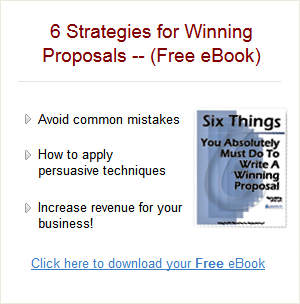How to Differentiate Yourself From the Competition
Think about your client for a minute. He has issued an RFP and now has a stack of proposals to wade through. It could be a tall stack or a short one, depending on how many people proposed. It doesn’t matter how tall the stack; what matters is that your client is about to read a bunch of proposals on the very same topic written by people who are probably going to offer very similar solutions to resolving his needs.
See the problem here? Your reader is about to be totally overcome by the sheer sameness of the proposals. By the time he’s finished reading, he won’t be able to tell your proposal from any of the others.
Unless you make it easy for him by identifying distinct discriminators.
Discriminators are just what they sound like-the elements of your proposed approach that discriminate you from the competition. Since all the competitors in any competitive situation are about equal technically, you must find ways to show the client how you differ from the competition. You begin doing this during your win strategy sessions. Now you need to be more rigorous.
First, list all the areas that you have determined are the client’s hot buttons for this competition (you know this from your strategy session, during which you identified the client’s concerns-his Hope, Fears and Biases). Next, assign a weight to each of those hot buttons; which of those concerns is of most importance to the client, which is less important, etcetera. A 1-to-5 scale is simple, with 5 being most important.
Now assign a number that corresponds to how well you meet the particular hot button from the client’s point of view (again, 1 to 5). Multiply the weight by your score. Now assign a number that you think best represents how each of the competitors ranks in terms of being able to satisfy each of the client’s hot buttons. Multiply those scores, and compare your score for each hot button to those of your competitors.
You can view the results from two perspectives. You can look at the weighted scores for each individual client hot button; this tells you how you fare against the competition on a line by line basis. This lets you see how you stack up on the points that are most important to the client, and then determine how to 1) play up your strength in the proposal or 2) counter a weakness.
You can also look at the total scores (the sum of the individual weighted scores). This can help you in your go/no-go decision process. If you have a significantly lower total score than the rest of the competition, you may decide that the gap is too wide to bridge, and that you’ll take a pass on this one.
The best proposals–the ones that win–offer the client a clear choice among the many competitors. Identifying discriminators is another way to get into the client’s shoes and take a hard look at what it takes to write a proposal that cannot be eliminated.

